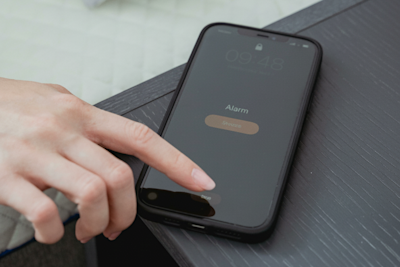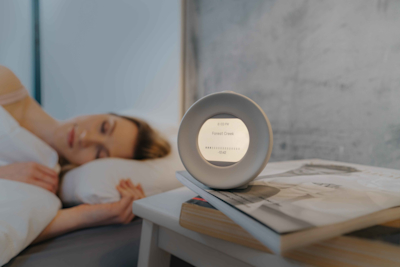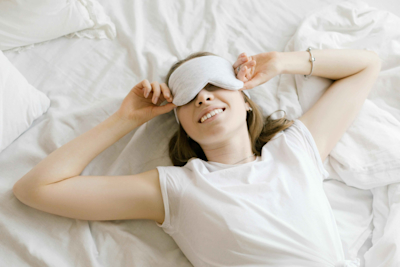
Have You Tried Meditation?
When you’re dealing with issues and you confide in someone, it can be very hard for them to know how to help. Often, the question ‘have you tried meditation?’ doesn’t help, especially for those of us who haven’t tried meditation. However, if you have tried meditation (more than once or twice), you’ll know that the question ‘have you tried meditation?’ isn’t so annoying after all. The fact is that it does help and there’s scientific evidence to support it. We’ve written about how you can benefit from meditation.
We’re so used to being busy that the thought of spending time doing nothing seems almost impossible for us. We have restless minds and we act as though free time, is wasted time. We need to change our mindset and embrace the idea of doing nothing. Remember that by doing nothing, we’re still doing something. When it’s time to relax, we suddenly start to wonder if there are any new messages or emails. After all, someone might need our help ASAP, right? Wrong. Well, maybe right, if you’re a doctor on call or you’re a developer with a project deadline coming up. Either way, your time is precious.
Where were we? Ah, yes, trying to relax. The problem is that more questions tend to surface, we are distracted. What’s going on on Facebook? What am I going to eat for dinner? What should I wear tomorrow? Are there enough toilet rolls? How do I look? Is there anything else I should be doing?
Meditation is one of the best ways to get rid of stress and completely relax. However, it’s worth noting that meditation is more than just relaxation, it’s a method of achieving a sense of contentment with what you have. There’s a lot of pressure to be happy but sometimes, all it takes is a change of perspective. ‘The results of previous meditation research suggest that meditation improves executive functioning. The results of [other studies] confirm this finding, but further extend it to suggest that this effect can be accounted for by an increase in the acceptance of emotional states.’[1] No special equipment is required and anyone can meditate! One useful tip for beginners is not to listen to relaxing music but simply to listen to yourself! Below you’ll find a short step-by-step guide on meditation.
1. Add some free time to your schedule.
By setting aside half an hour during your busy week, you will have enough time to stop thinking about all of your responsibilities and start meditating. Make your meditation shorter when you start, a couple of minutes per session. Then, extend the time spent on each session gradually. You have to start somewhere! If you have more spare time, take a shower and put on clean, loose-fitting clothes. It’s not a good idea to meditate after a heavy meal, so when you start try to have your sessions in the morning or before you go to bed.
2. Find a cosy, quiet and isolated place.
It’s important not to be distracted by anything and to meditate in a place that you like, where you feel comfortable and content. It can help to have a special space for the purpose of meditation at home, one location you use each time. It will help you create meditative vibes and to associate that location with a sense of relaxation. Bearing this in mind, the bedroom or living room are good choices.
3. Make it more comfortable.
Sit on a sofa, an armchair or even on the floor if you like. There are all kinds of meditation pillows available but regular pillows from your bed or a cushion from your sofa would work too. The position of your body is very important, you can use a wall to help you at first if that’s easier. Sit with your back against the wall, with a pillow underneath you, straighten up and gently lift your head as though there’s an invisible string connecting the top of your head to the ceiling. You can sit cross-legged or in a typical sitting position with your feet touching the floor and your hands on your thighs. Some people choose to meditate in a kneeling position. It’s essential to meditate whilst sitting up straight because if you’re lying down, you can easily fall asleep! That’s not such a bad idea if you’re meditating before you go to sleep (especially if you suffer from insomnia) but it might look a bit odd if you meditate whilst lying on the office floor.
4. Close your eyes, take a few deep breaths.
For the next 10–15 minutes you won’t be thinking about the past or the future, get ready. Focus on the here and now, on the present, on your breath, forget about your everyday problems and focus on yourself breathing in and out, inhale and exhale. It can even help to count the amount of seconds every breath takes. Breathing is the key to meditation, as it’s something we do without thinking. Try to slow down your breath, as this will help you slow down your thoughts. The beauty of meditation is in its simplicity, try to control your breath and be aware of it.
5. Relax all of your muscles.
As you breathe in, try to relax each part of your body from your toes to your head, even your tongue should be relaxed. Imagine that each one of your muscles is made of cotton wool. If you feel tension somewhere, direct your breath to that part of your body, for example if you have tension in your neck, try to imagine that your neck is ‘breathing’ too.
6. Focus on the present moment.
When you’re in a deep state of concentration, count from 20 or 10 to 1 and imagine each number. You can imagine them written down on paper, or in any way you’d like. Try to focus on counting and don’t think about anything else. It may not be easy, especially when you’re new to meditation. Don’t give up. Instead of counting you can also imagine a safe place and move there in your thoughts. You can also think of some positive events or your achievements. Positivity is one of the key elements of meditation. If you like the seaside, try to imagine the warmness of the sand and the sunlight on your skin. Listen to the sound of the water, the way the breeze blows and the seagulls. Try to meditate using all of your senses!
7. All good things come to an end.
Finish meditating by counting from 1 to 5 and visualising the numbers. You can also think about the feeling that will come in the moment, after meditation. Then open your eyes, stretch a little bit and stand up.
Also find out what is walking meditation?
Is there anything you’d like to add, have we missed anything? If you’re interested in sharing your experiences with us or writing a guest post for us, send us an email via hello@mudita.com!
Please feel free to get in touch via social media (send us some photos or videos too), you can find us on Facebook, Twitter and Instagram, let’s connect! To learn more about Mudita, take a look at our website and our other posts.
If you enjoyed reading this article, please share and recommend it!
Related stories

Why Smartphone Alarms May Be Ruining Your Sleep
Find out why smartphone alarms may harm your sleep and explore healthier alternatives like mindful alarm clocks, sunrise lights, and gentle sounds.

What Science Says About the Best Alarm Sounds for Waking Up
Discover the science behind the best alarm sounds for waking up, and how Mudita Harmony and Mudita Bell help you rise refreshed every morning.

10 Simple Steps to Sleep Better and Improve Sleep Quality
Struggling with sleep? Discover 10 simple, science-backed tips to improve sleep quality, build better habits, and wake up refreshed every morning.
If you'd like to receive the best stories from our blog, keep up to date with our progress and get notified about our product releases and special discounts.